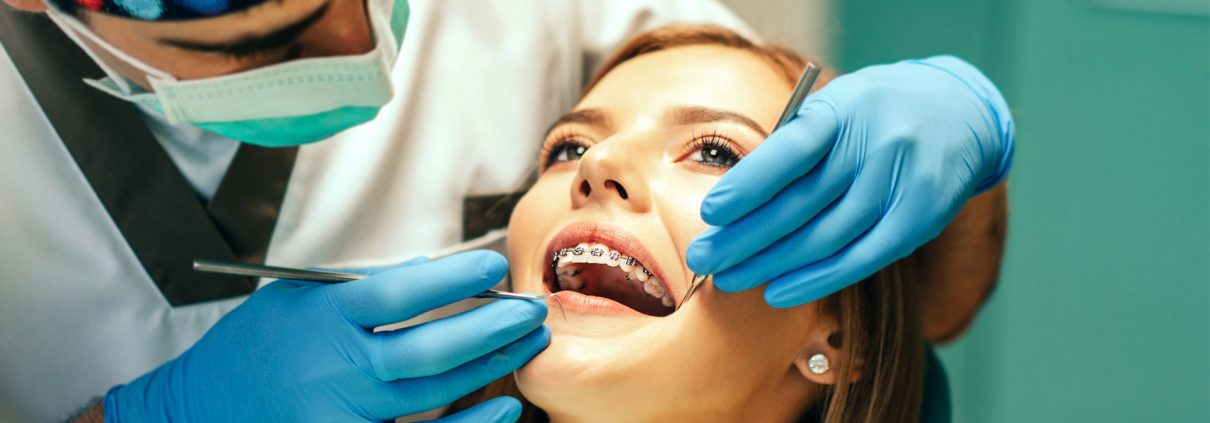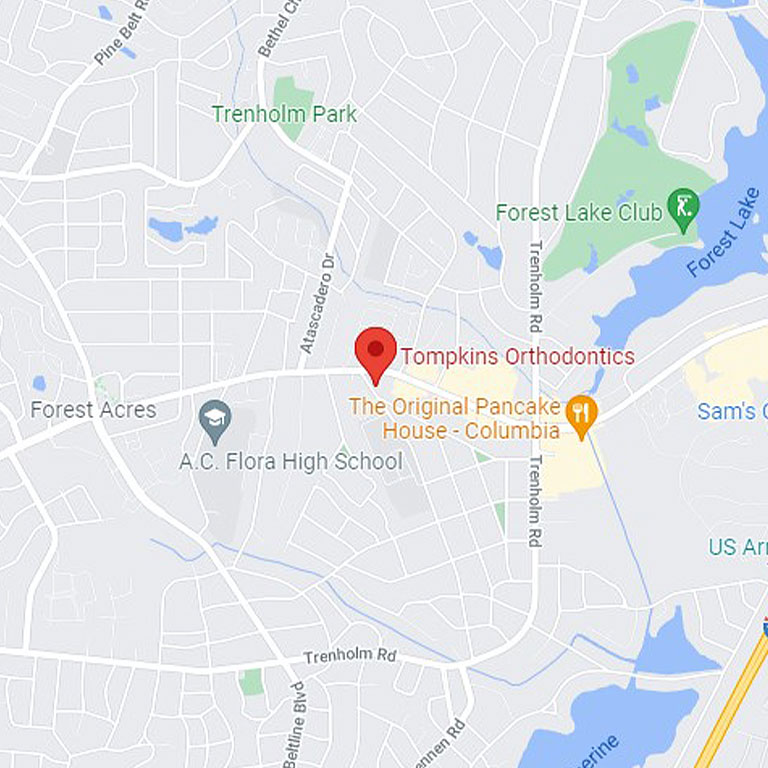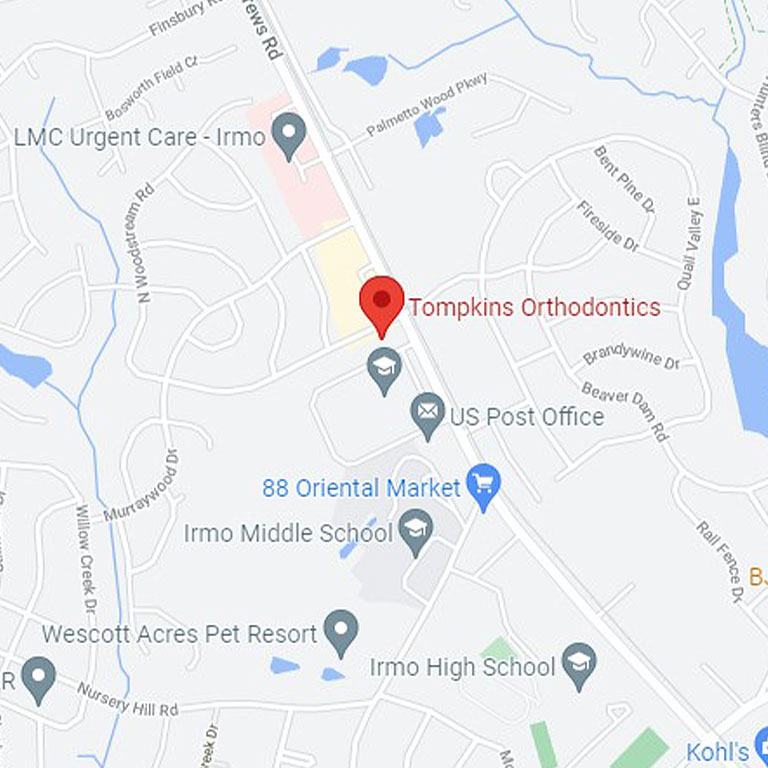What’s the Science Behind Braces?
Orthodontic braces in Columbia, SC are available at Tompkins Orthodontics, at our two office locations. Braces are highly effective for realigning teeth and correcting overbites and under bites. But what’s behind this “miraculous” solution for imperfect teeth? If you’ve ever wondered how and why braces work, read on!
The Parts of Braces
Braces consist of several key parts, which are the brackets, the wires (also called the arch wire), and bands. The brackets are the small squares that your orthodontist bonds to the front surface of each tooth. These bonds serve as anchors for the wire that runs through the little loops on the fronts of the brackets. Bands, which wrap around the molars, provide additional support.
Controlled Pressure
Braces work by applying consistent, controlled and gentle pressure to the teeth over an extended period of time. This pressure is exerted and controlled by the wire. When you visit your orthodontist in Columbia, SC, they adjust the tension on the wire, increasing it incrementally with each visit. The tension from the wire creates a gentle force that moves the teeth into their desired positions. This is why, after the adjustment appointment, you may experience slight discomfort from the increased pressure. But that discomfort quickly subsides as teeth begin to shift.
Is it Safe to Move Teeth?
It is safe to move teeth with braces. Each tooth is connected by fibrous connective tissue to the surrounding bone, called the alveolar bone. When braces apply pressure to a tooth, the periodontal ligament on one side of the tooth compresses, while the ligament on the opposite side stretches. This pressure triggers a biological response in the alveolar bone. The bone undergoes a kind of remodeling, a process where old bone tissue is broken down and new bone tissue forms. On the pressure side of the tooth, bone resorption occurs, where bone cells called osteoclasts break down bone tissue. On the tension side, bone deposition takes place, where osteoblasts form new bone tissue. This dynamic process allows the tooth to move and the jawbone to adapt to the new tooth position!
At Tompkins Orthodontics, we’re glad that you’re curious about how braces actually work. We’d be happy to answer any other questions you have, too. Please contact us to book your appointment today!









Leave a Reply
Want to join the discussion?Feel free to contribute!